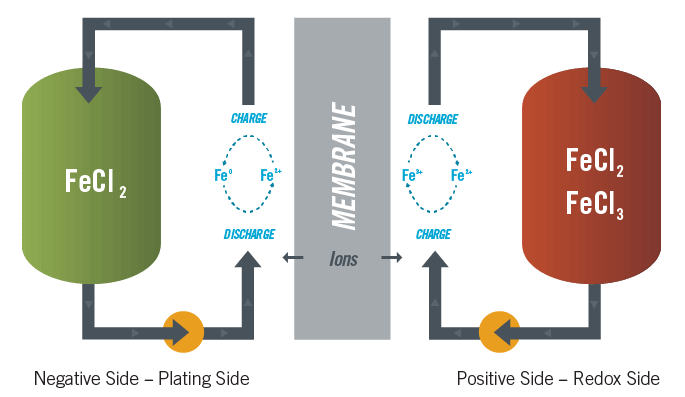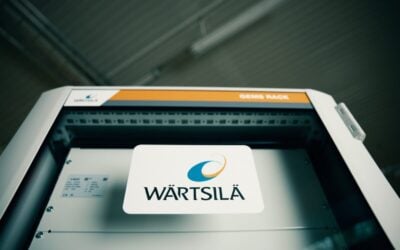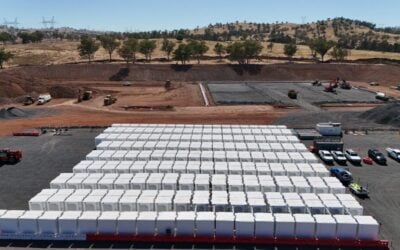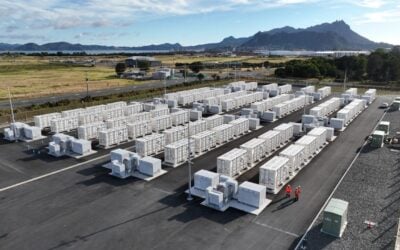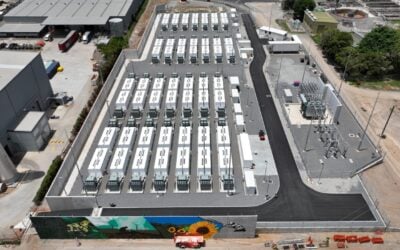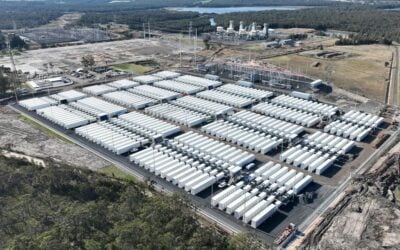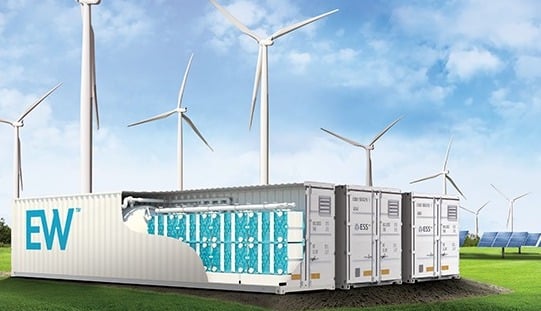
ESS Inc, the US-headquartered manufacturer of a flow battery using iron and saltwater electrolytes, has launched a new range of energy storage systems starting at 3MW power capacity and promising 6-16 hours discharge duration.
The company announced the launch of the ESS Inc Energy Center last week, a containerised utility-scale energy storage product aimed at serving front-of-the-meter use cases as well as larger commercial and industrial (C&I) site applications. Based on ESS Inc’s second generation of flow battery modules, the solution is designed to support large-scale renewable energy projects, serve transmission and distribution (T&D) applications and supply peaking energy capacity to replace peaker gas plants.
ESS Inc’s previously available system was called the Energy Warehouse, a 75kW / 500kWh solution. Unlike Energy Warehouse, Energy Center is configurable and can be scaled and custom-designed to meet a wider range of specific project sizes, the company said. It can also stack multiple applications to maximise revenues or energy cost savings.
While other companies in the flow battery space have mostly focused on vanadium or zinc-bromine electrolyte, ESS Inc has been bullish on the potential for its ‘all-iron’ flow battery. It has a claimed 25-year expected lifetime without performance degradation and the company claims it is safe: in a 2018 interview CEO Craig Evans told Energy-Storage.news that a report from a fire marshall on the battery chemistry “was [just] three sentences long on how the fire marshal should handle our battery in case of an event”. Meanwhile the battery’s contents are non-toxic and are not made using rare-earth materials or hazardous chemicals, the company claimed.
Try Premium for just $1
- Full premium access for the first month at only $1
- Converts to an annual rate after 30 days unless cancelled
- Cancel anytime during the trial period
Premium Benefits
- Expert industry analysis and interviews
- Digital access to PV Tech Power journal
- Exclusive event discounts
Or get the full Premium subscription right away
Or continue reading this article for free
In that 2018 interview Evans had conceded that lithium-ion batteries had the big head start on manufacturing scale and cost reduction on newer battery technologies like his company’s, but that technical advantages such as the ESS Inc flow battery’s operating temperature of 50°C — meaning it doesn’t need HVAC solutions to be deployed in hot environments — and ever-cheaper renewable energy could offer market opportunities.
ESS Inc was among a handful of flow battery makers interviewed for that feature article a couple of years ago, along with vanadium redox flow battery (VRFB) companies VRB Energy and redT (the latter now part of Invinity Energy Systems following a merger with Avalon Battery) and zinc bromine flow battery company Primus Power.
“[Lithium battery storage companies] have warranty issues, augmenting the pack over time. Deploying it in hot environments, they won’t be able to meet the efficiency requirements because they’ve got huge HVAC loads. Our battery operates at 50°C.
“That’s what’s got their foot in the door, history, the electronics and EV markets. Where these flow batteries really come into the market and long duration really gains is with low cost renewables. I think you’ll see more and more flow batteries out there. Deployments will get you more deployments,” Evans said at the time.
Solar power project developer David Brown, a co-founder and senior principal at Obsidian Renewables, said his company was “excited about the economics, operating life and design flexibility that the ESS Energy Center solution offers”.
“A rapid and dramatic shift is occurring that favors pairing larger-scale battery installations with renewables. These projects are finding improved overall customer value from longer duration, daily cycling and the flexibility to adapt to evolving use cases that are not constrained by cycle life.”
The company has made numerous demonstration project deployments in territories including Brazil and Germany and gained investors including Bill Gates’ Breakthrough Energy Ventures, Softbank Group’s SB Energy subsidiary and chemicals company BASF since the company was established in 2011. In 2019, insurance company Munich Re launched a long-term coverage plan for battery performance with a term of 10 years and signed up ESS Inc as its first customer.
“We are very pleased to introduce and deliver the only truly environmentally safe, highly flexible and customizable, long-duration storage solution to the market. The availability of a low-cost, ultra-long-life energy storage solution with the lowest environmental impact will help reduce customer costs and meet the most stringent sustainability objectives,” CEO Craig Evans said in a press release announcing the Energy Center’s launch.
“Based on the rapid and continued growth of renewable resources that are driving energy markets, long-duration storage solutions like ours will help catalyse the energy transition and tackle climate change head on.”
